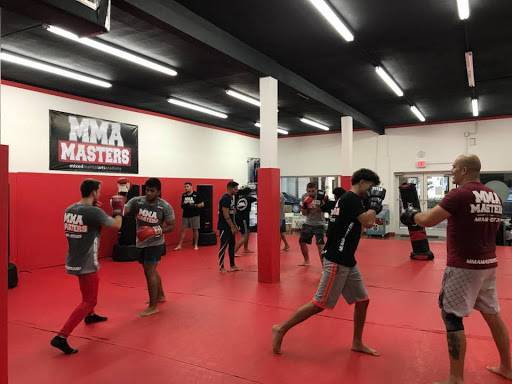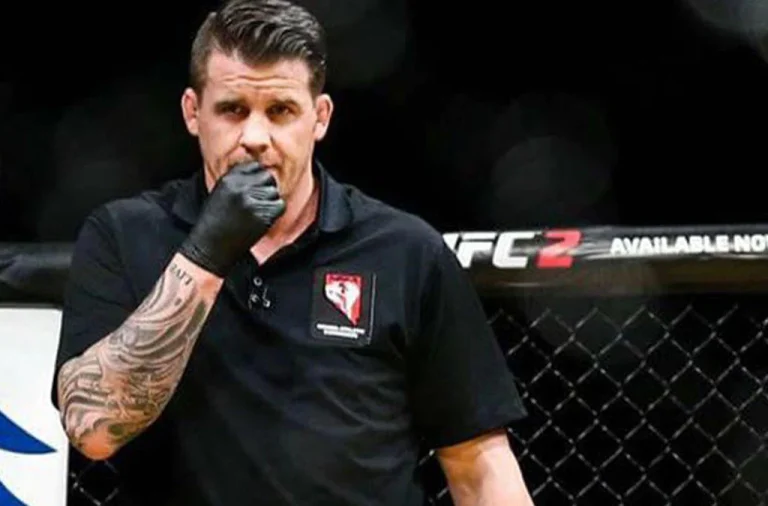How do you increase stamina for hard sparring in MMA or BJJ?
Mixed martial arts (MMA) and grappling sparring can be a physically demanding activity, so having good stamina is crucial for performing well and avoiding exhaustion. For MMA specifically you will be dealing with striking and grappling together, which means the physical exertion on your body is high.

Here are some tips for increasing your stamina for MMA sparring:
- Engage in cardiovascular exercise: Cardio is essential for improving your overall fitness and endurance. This can include activities like running, cycling, or swimming.
- Do interval training: Interval training involves alternating short bursts of intense activity with periods of rest. This can help improve your anaerobic endurance, which is important for high-intensity activities like MMA and jiu jitsu.
- Try circuit training: this combines strength training with cardiovascular exercise. This can help improve your overall fitness and stamina for MMA sparring.
- Incorporate endurance drills into your training: Endurance drills, such as shadow boxing, jumping rope for extended periods of time or positional BJJ/Grappling sparring can really boost your endurance and cardio.
- Get enough rest and recovery: It’s important to give your body time to recover after training sessions. This can help prevent overtraining and ensure that you’re able to perform at your best during sparring sessions.
- Stay hydrated: Dehydration can lead to fatigue, so it’s important to stay hydrated during training and sparring. Make sure to drink plenty of water before, during, and after your sessions. If you like you can supplement with electrolytes or other supplements, but do your research on what’s good for your body and avoid anything with a lot of sugar or caffeine.
Check out some of these tips specifically for building your BJJ sparring/rolling endurance:
- Get the rounds in: The most effective way to build cardio for rolling is simple: roll more. The more frequently you spar, the more your body adapts and gets used to grappling in live situations.
- Work on your breathing: Studies have shown that breathing more steadily (and through your nose) can improve athletic performance. Being in control of your breath can help you roll more efficiently and prevent gassing out.
- Don’t make it a war every time: Everyone likes to win. But sparring is training, and training is a place to learn. Avoid making every roll into a war, and focus more and moving and trying techniques. You cannot maintain a pace of 100% for every roll.
- Know your limits: Try to find out where your maximum is, and stay just under it. Pushing your body too far can lead to injury and exhaustion, which can put you out of training for longer.
By incorporating these tips into your training routine, you can improve your stamina and endurance for MMA and grappling scenarios. We all want to train better for longer, so stay safe and train smart!
What is a good training schedule for mMA?
A good training schedule for MMA will vary depending on the individual’s goals, experience level, and availability. However, a general schedule would usually include a mix of cardiovascular conditioning, strength training, and skill-based drills with sparring included.
Remember, balance is key: you want to maximise skill and strength gains with rest and recovery
Here is a sample training schedule for MMA:
Monday:
- Cardio: 30 minutes of interval training (e.g. sprints and high-intensity intervals)
- Strength training: Full-body strength training circuit, focusing on compound exercises such as squats, deadlifts, and presses
- Skill work: Striking drills with a focus on footwork and technique
Tuesday:
- Rest and recovery
Wednesday:
- Cardio: 45 minutes of steady-state cardio (e.g. jogging or cycling)
- Strength training: Upper-body strength training, focusing on exercises such as push-ups, pull-ups, and bench press
- Skill work: Grappling drills and sparring
Thursday:
- Rest and recovery
- Optional: Therapeutic treatments such as massage or physiotherapy
Friday:
- Cardio: 30 minutes of HIIT (high-intensity interval training)
- Strength training: Lower-body strength training, focusing on exercises such as lunges, step-ups, and calf raises
- Skill work: Striking drills and pad work
Saturday:
- Open mat time for sparring and drilling
Sunday:
- Rest and recovery, cheat day (eat what makes you happy!)
A note on recovery
It is important to mix recovery with training for MMA athletes because recovery is essential for the body to repair itself and adapt to the stresses of training. Without adequate recovery, the body may not have enough time to heal and rebuild, leading to a decrease in performance and an increased risk of injury. Recovery can include activities such as foam rolling, stretching, and getting sufficient sleep and nutrition.
By incorporating recovery into their training schedule, MMA athletes can optimize their performance and reduce the risk of injury.
- Buggy Choke: The Complete Guide - March 6, 2024
- Jiu Jitsu World League: Your Complete Guide - March 5, 2024
- How much do UFC referees make? A comprehensive guide - March 5, 2024








